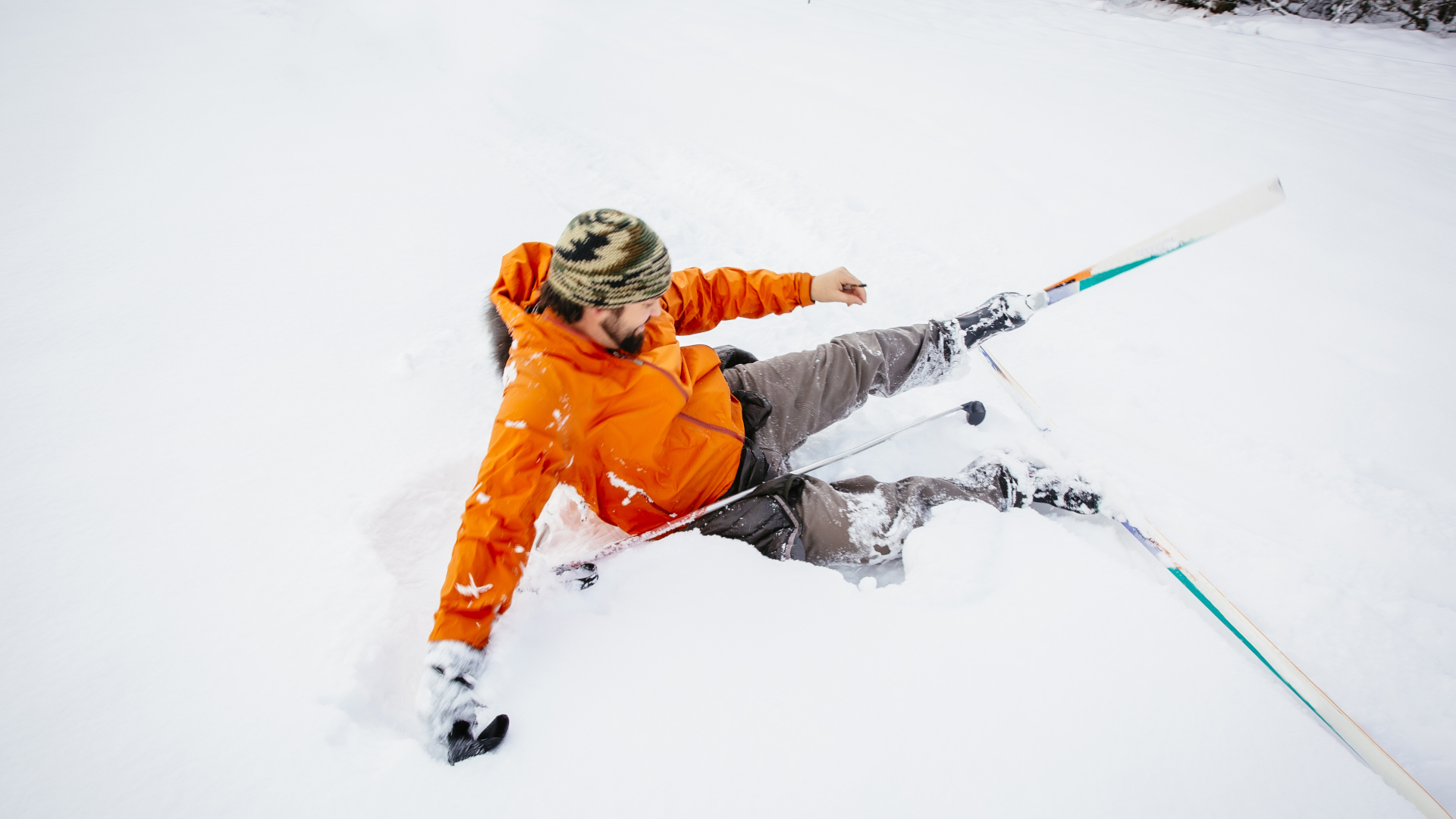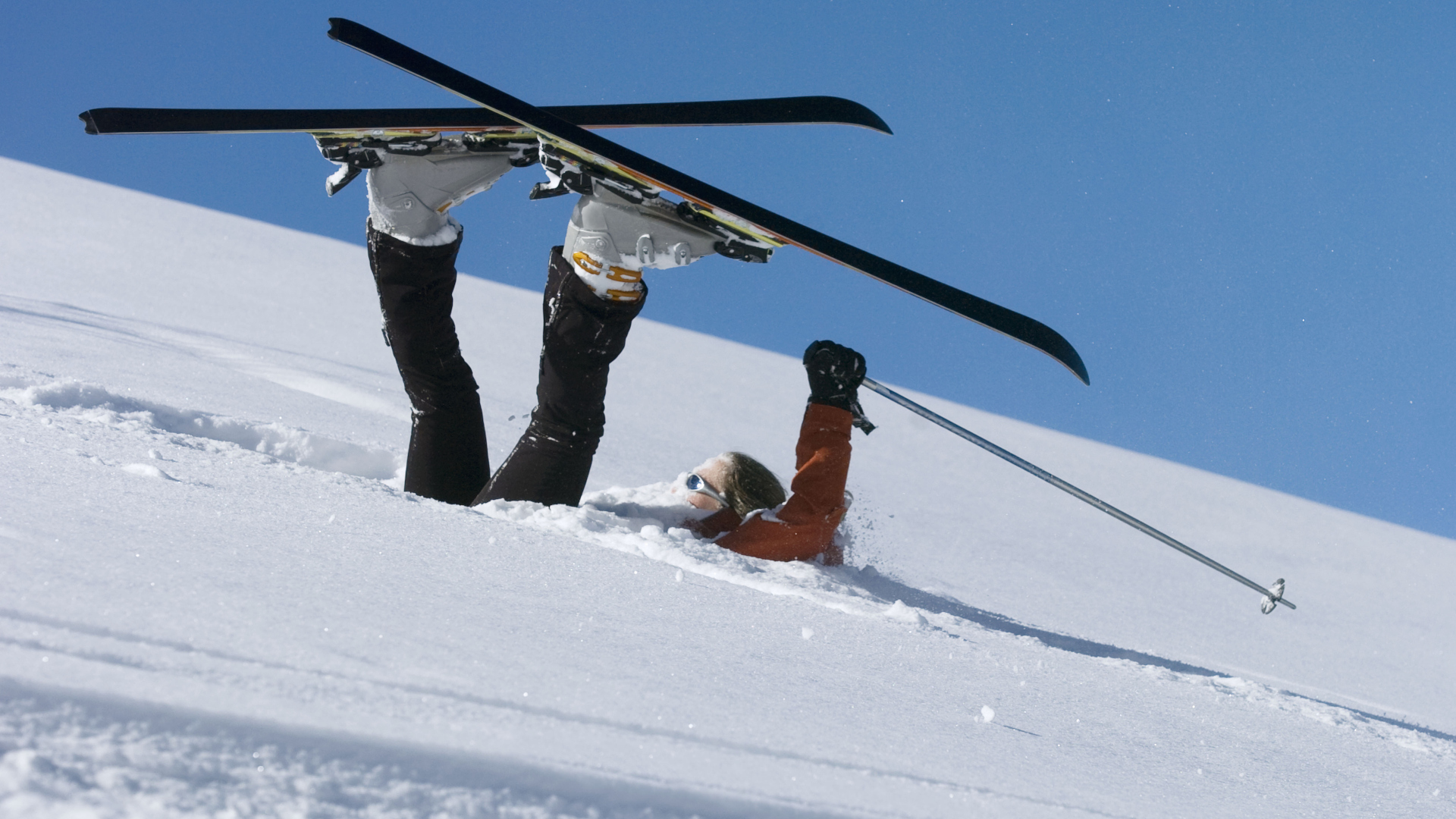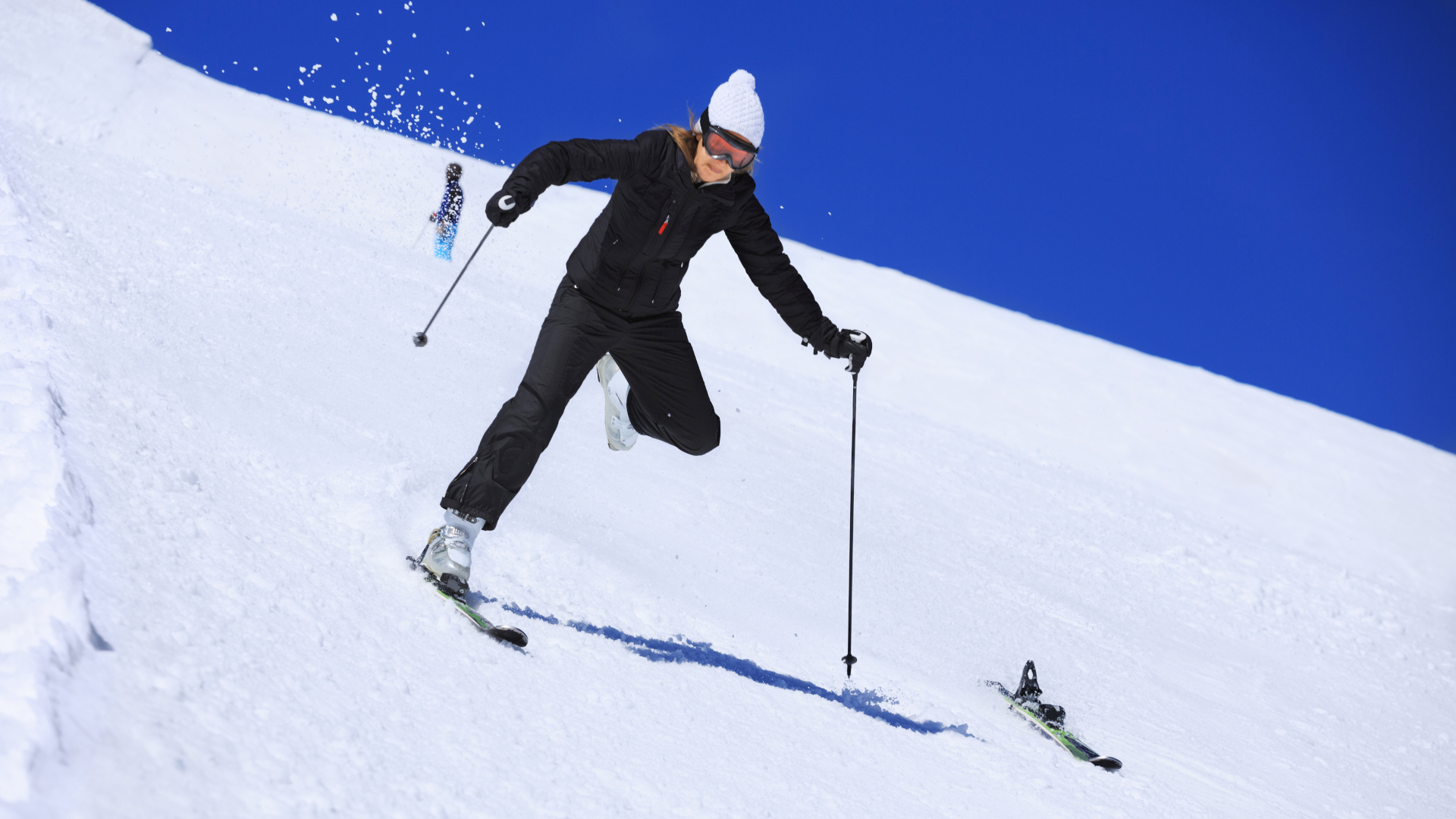How to get up after falling on skis
Knowing how to get up after falling on skis takes the exasperation out of learning to ski – and gets you out of the way of other skiers quickly

Falling is an inevitable part of skiing, whether you’re a newbie or a seasoned skier, and knowing how to get up after falling on skis makes the difference between a sweaty struggle in the snow and being able to brush yourself off and keep going.
When you’re new to skiing, one of the most stressful parts of a day on the snow is worrying that you’re going to fall and not be able to get up. Without a little guidance and practice, you might find that every time you’ve got your skis underneath you, you start sliding down the hill before you can stand up and right yourself. It’s hard work, feels a bit embarrassing and can be stressful and dangerous when there are other skiers zooming down the slope or track towards you.

Once you know how to position your skis and yourself though, you’ll find that standing up is more about technique than strength, and really nothing to worry about. In this article, we outline how to get up after falling on skis whether you’re cross country skiing or alpine skiing, and also what to do if your skis come off in the fall.
If you find you’re falling a lot while skiing, you may want to check that your skis aren’t too long and consider some more lessons to help you learn how to stop and turn better to control your speed.
How to get up after falling while cross country skiing

When you fall while cross country skiing, the chances are that you’ll do so on a slight downward slope. If you just point your skis down the track and try to stand up, your skis will continue heading downhill before you can get your weight over your skis again. So, move your skis so that they’re running horizontally across the track then bend your knees a lot and shuffle your hips close to your skis.
To stand up, it’s easier to use your hands rather than your poles to push yourself into a low crouching position, so just keep your pole straps around your wrists for now. Once you’re crouching over your skis, grab your poles and plant them then straighten your legs to stand up and carry on down the track.
If you fall with your legs crossed, it’s best to use your pole to release one of your skis, then just stand up and click back in.
All the latest inspiration, tips and guides to help you plan your next Advnture!
How to get up after falling while alpine skiing: technique 1

When you fall while zooming your way down a ski run or piste, you can end up in all kinds of strange positions with your gear everywhere, which is affectionately known as a yard sale. The first technique for getting up is a bit similar to cross country skiing, in that if you point your skis downhill and try to stand up, your skis will start moving downhill before you can stand and you’ll never get up.
From wherever you are, get your skis downhill from you – you may have to lie on your back and swing them over you. Once they’re downhill, position them so that they’re parallel to the slope, maybe even pointing slightly uphill.
Plant your poles into the snow nearby so your hands are free. Dig the edges of your skis into the snow a bit for grip, bend your knees, and turn your upper body toward the snow so you can place both hands down, and push down to lift your hips, keeping your knees bent. Grab your poles and use them to help push you the rest of the way up.
Check for skiers coming from above you, and head on down when it’s safe.
How to get up after falling while alpine skiing: technique 2

The second technique looks a bit more awkward, but many people find it’s a bit easier and involves less contortionism.
Again, success has to do with getting your skis downhill from your body, but you actually want to roll onto your belly. You’ll need to bend your knees as you roll to lift your skis, then point your toes out to the sides so that when you straighten your legs and bring your skis down, the tail ends touch and the tips point out to the sides making a big, wide V.
Then you can just press up to your hands and knees, push into your hands and start to lift your knees and hips (it’s kind of like the world’s most awkward Downward Facing Dog). Keep your hands down and carefully bring your skis a bit closer to each other, narrowing the V, and when you feel stable you can stand up. Then you’ll need to carefully shuffle both skis around so you’re facing downhill again when you’re ready to push off.
What if your ski comes off when you fall?

Modern ski bindings come with automatic self release so if things get hairy, your boot pops free from the ski and your knee doesn't get twisted. This technology has saved many a knee ligament, but getting your ski back on can be a bit exasperating, especially if the bottoms of your ski boot are filled with snow making it hard to get back into your bindings. The good news is that once your ski is off, it’s actually much easier to stand up.
If only one ski pops off, stand up and get into that same position where you’re parallel to the slope again, but make sure that the ski that is still on is now your downhill ski. Position your other ski above it so it’s parallel across the slope and push it into the snow a bit to try to stabilize it.
Stand on the downhill ski and either knock your free boot against your other boot, or use your pole to clear any snow from the bottom of your boot. Then stabilize yourself with your poles and clip your boot back into your binding and you’re ready to go.
If both skis come off, you’ll just have to do this twice, starting with your downhill ski.
Julia Clarke is a staff writer for Advnture.com and the author of the book Restorative Yoga for Beginners. She loves to explore mountains on foot, bike, skis and belay and then recover on the the yoga mat. Julia graduated with a degree in journalism in 2004 and spent eight years working as a radio presenter in Kansas City, Vermont, Boston and New York City before discovering the joys of the Rocky Mountains. She then detoured west to Colorado and enjoyed 11 years teaching yoga in Vail before returning to her hometown of Glasgow, Scotland in 2020 to focus on family and writing.

